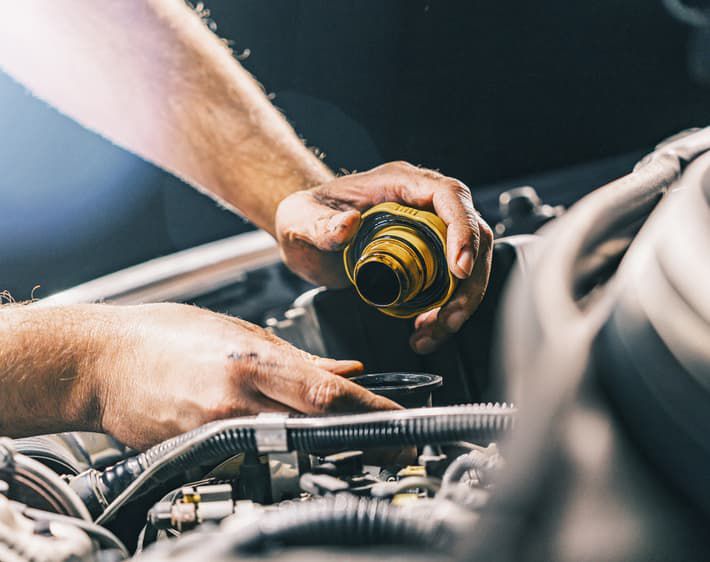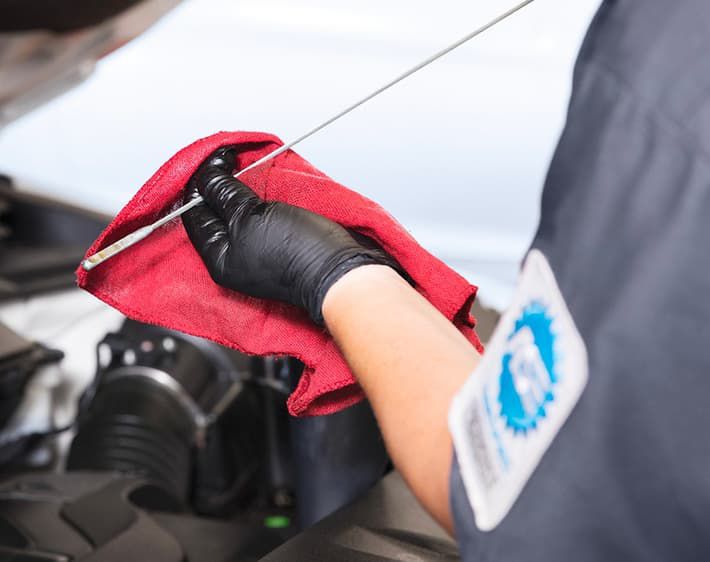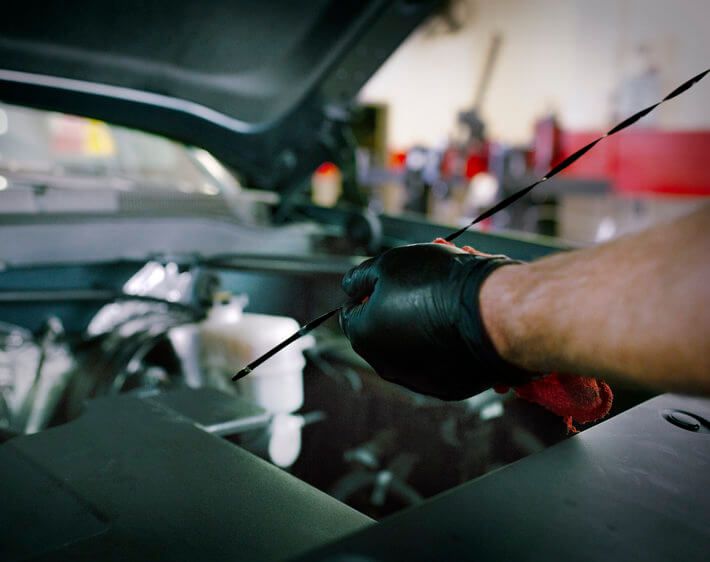No, that’s not a genie’s magic lamp you spy on your dash — that’s your engine oil light! In most cases, this light is telling you that your engine oil may be low and to check your oil.
But before you top off your oil and call it a day, consider the consequences of doing so, and whether it might be better to take your car in and see which service it actually needs! Learn the difference between a top off and an oil change, how to know which one you need, and how often this maintenance is recommended for your car, truck, or SUV.
What’s the Difference Between an Engine Oil Top Off or Change?
There seems to be a common misconception that topping off engine oil is synonymous with having your oil changed. In reality, there are fundamental differences between simply topping off and getting an oil change done on your vehicle.
The practice of topping off your oil is essentially just like it sounds — you’re adding fresh oil on top of existing oil. However, the trouble with mixing new and old oil is the new oil can become contaminated in the process or allow impurities to continue building in your engine.
Additionally, while engine oil can degrade over time, typically your oil level shouldn't drop much between oil changes. If topping up your oil has become a continuous habit, you may be ignoring serious issues, such as:
In contrast, the oil is fully drained during an oil change and both the oil and the oil filter are replaced. With the used oil discarded, the new oil can lubricate your engine’s parts to keep your vehicle operating its best.
How Do You Know if You Need a Top Off vs. an Oil Change?
Now that you know topping up and changing your oil aren’t interchangeable, you might be wondering when to top off engine oil and when to go in for a full service. To answer this question, start by checking the oil.
Make sure your engine is cool, remove the engine oil dipstick (there may be more than 1 dipstick under the hood and it may even be located as part of the oil filler cap), and wipe it down with a clean cloth. Then, push the dipstick all the way in, wait a few seconds, and withdraw the stick to examine the oil level, smell, and color. The level will tell you how much oil your car has, while the smell and color of the oil may help identify whether your oil is contaminated. If the oil smells sweet or like fuel, visit your local service center.
Every dipstick has an indicator of the proper oil level. The indicator might come in the form of crosshatching, the letters L and H (low and high), or the words MIN and MAX. If the top of your oil streak falls below the minimum mark, more oil may be needed. Alternatively, if the oil’s color is not between a shade of amber or black (for example pink, red or green), pay a visit to your local service center for a proper diagnosis.
How to Top Off Oil In Your Car
Topping up your oil is typically not recommended unless the level is below the minimum mark. If you're running low on oil, however, topping off may help you get to your nearest Firestone Complete Auto Care for an oil change service.
If you do choose to top off your oil, you’ll need to use the viscosity and the quality level of oil recommended in your owner’s manual. To add oil, turn your vehicle off and wait for the engine to cool. Remove the oil filler cap, and slowly pour in a bit at a time. Overfilling can cause problems for your engine, so start by adding small amounts at a time and checking the oil level frequently while filling.
After about a minute of waiting for the oil to settle to the bottom, check the dipstick again. If the oil level is still below the minimum mark, add more oil and continue checking until the level is between the minimum and maximum mark. Twist the filler cap back on securely, and you’re all set.
Can I Top Off Oil In a Hot Engine?
It's best not to add oil to a hot or running engine. Not only will the oil level be a little higher because it is hot, accidentally spilling oil onto a hot engine can cause smoking or even a fire. If you plan on topping up the oil, turn your car off and wait several minutes (allowing the engine to cool) before you do anything else.
Again, topping up the oil is not a replacement for having a full-service oil change. Failing to change your oil can be pretty risky business, so you’re always better off investing in regular, professional maintenance services.
What’s the Suggested Maintenance Schedule for My Vehicle?
Keeping up with routine maintenance is one of the best ways to ensure the health of your vehicle and help extend its overall lifecycle. While your specified maintenance schedule will depend on your car’s make, model, and mileage, the experts at Firestone Complete Auto Care can offer guidance on which services to perform, as well as when to have them done.
Take a second to fill out the See My Services required fields, and start giving your car the preventive care and routine tune-ups it deserves.
Stay On Top of Your Oil With Firestone Complete Auto Care
If you find yourself having to top off your oil a little too frequently, it's time to visit your local Firestone Complete Auto Care! Our technicians can inspect your vehicle and provide expert recommendations on everything from which services to choose to which type of oil will help your car perform its best. Our expert technicians will keep your vehicle running newer, longer for thousands of miles, and memories to come!



